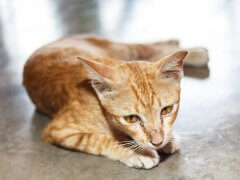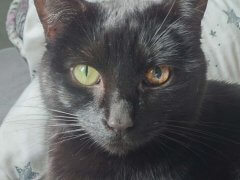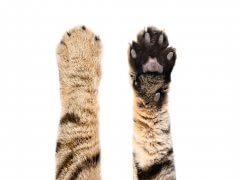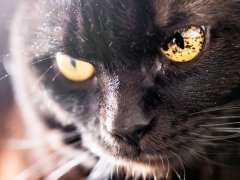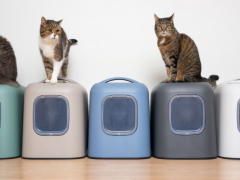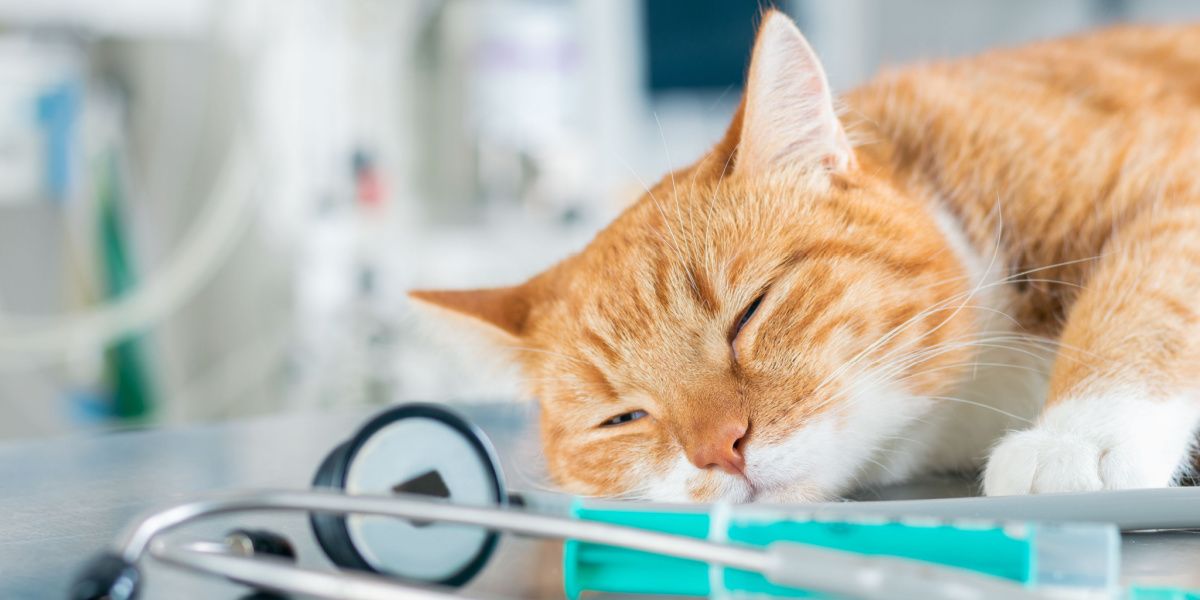
If your cat has suffered a head injury, you may be wondering what concussions in cats look like. In this article, we will take a look at why cats may develop concussions, how to identify them, and what to do to help them.
Quick Overview: Concussions in Cats







What Concussions in Cats Mean
A concussion is the mildest type of traumatic brain injury (TBI). The word “concussion” comes from the Latin word “concutere,” which means “to shake violently.”
Concussions in cats are caused by head trauma, such as a blow or knock to the head, or by trauma to the body which causes the head and brain to move suddenly in opposing directions, causing the brain to be jolted inside the skull.
This causes compression and twisting of brain tissue, stretching and damaging brain cells. This then leads to temporary disruption of brain function and can lead to brain swelling. There is no discernible physical damage to the brain cells. Under the microscope, the brain tissue appears normal.
More serious traumatic brain injuries include:
- Contusion or bruising – there is physical damage leading to hemorrhage within the brain tissue
- Laceration – there is physical damage (the equivalent of a cut with a knife) to brain tissue
With concussions, there is some misunderstanding about the precise terminology, and in particular, the difference between the singular (“concussion”) and plural (“concussions”).
A single incident is known as “a concussion” and a cat may be said to be suffering from “concussion” or “a concussion.”
Repeated or multiple incidents are known as “concussions” and a cat could then be said to suffer from “concussions.”
What Are the Signs of Concussions in Cats?
Concussions in cats are not life-threatening in themselves, but the effects of a feline concussion can range from mild to serious.
- In a mild case, there is a brief loss of consciousness, after which the cat returns to normal.
- In a more serious case, affected (“concussed”) cats suffer impaired brain function, leading to an altered state of mental alertness. Cats cannot tell us this, so we need to observe them ourselves to appreciate that they have concussions.
How To Know That a Cat Is Suffering From Concussions
If you have witnessed a cat suffering some sort of trauma (such as a road accident, a fall from a height, or an attack by a dog), then you should be aware of the risk of concussions. If their head or neck was involved at all, or if they were shaken or thrown around, concussions are very likely.
Symptoms of Concussions in Cats
Concussion symptoms include unresponsiveness, sleepiness, lethargy, lack of normal alertness, walking with an abnormal gait, trouble walking around, jumping up or down, and struggling to climb stairs.
Cats may suffer dizziness, staggering, walking in circles, swaying, or they may just wish to stay still, sleeping more than normal. An affected cat may occasionally suffer seizures.
Other possible effects can include pupils of different sizes, vomiting, and side-to-side flicking of the eyes (“nystagmus”).
How Common Are Concussions in Cats?

While outdoor cats are more often affected by concussions, it could happen to any cat.
Concussions in cats of all ages are common, with a number of possible causes. The problem is more often seen in outdoor cats, as they are more likely to encounter trauma.
What To Do if You Suspect Your Cat Has Concussions
Concussions can follow any head trauma, but more serious brain injuries may also happen. These can present in a similar way to concussions, but with a more severe degree of change. Concussions are temporary, but more serious injuries following head trauma can lead to permanent brain damage. This is why it is so important to take concussions seriously.
Any cat that develops suspected concussions should be taken to your DVM veterinarian urgently so that the problem can be identified and assessed, and so that treatment can be given.
If the concussion is very mild, and your cat has rapidly made a full recovery after a traumatic incident, you may wish to monitor them at home. However, in general, after any trauma that is severe enough to cause a concussion, it is safest to take your cat to the emergency veterinary service for medical attention if your daytime vet is closed.
Your veterinarian may take the following steps.
1. Detailed History Taking
Your vet will discuss every aspect of your cat’s condition and review their overall health. Many factors are important in this history, such as how much time your cat spends outside, if you live close to a road, and if anybody witnessed the traumatic incident happen.
Cat owners should carefully observe their pet’s behavior in the kitty litter box, to see if they are urinating and defecating normally. Along with assessing your cat’s brain function, your vet will also check for any other physical damage that could have happened elsewhere in your cat’s body at the same time.
It can be helpful if you take a video that shows evidence of your cat’s concussion, such as stumbling, walking oddly, etc.
2. Physical Examination
Your veterinarian will carefully check your cat’s body for any abnormalities. This will normally include taking the cat’s temperature, listening to their chest with a stethoscope, and weighing them.
A vet will normally carry out a full neurological examination involving checking the various muscles, nerves, and reflexes around your cat’s body, checking their eyes, and analyzing the impact of the concussion. They may allow your cat to move around the consulting room, watching them walk, jump, and climb to try to assess the degree of concussion.
3. Routine Blood and Urine Tests
It’s very likely that your veterinarian may carry out blood work, including the usual panel of diagnostic tests, such as hematology (blood count) and biochemistry profiles (including electrolytes). Simple urinalysis tests may also be carried out.
This type of workup is known as “the minimum database,” and it’s carried out to review most sick cats, regardless of the signs of illness. It provides important background information about the health of your cat, including an assessment of possible complications such as ongoing internal bleeding.
4. Additional Testing
Radiography (x-rays) and ultrasound examinations may be recommended by your vet to check for any obvious skull fractures or other damage. They can include different parts of your cat’s body that could have been damaged at the same time as the concussion.
More detailed diagnostic imaging, such as Computerized Tomography or CT scans or Magnetic Resonance Imaging (MRI) scans may be recommended to visualize internal details of the brain to check for other damage.
Blood pressure measurement is often carried out, as high blood pressure can contribute to brain hemorrhages that can resemble concussions.
Can Concussion Be Treated?

Treatment for concussion in cats will vary, depending on each individual case and the severity of it.
Treatment for a concussion depends on the severity. Mild cases need no treatment, while more severe cases may require significant medical intervention.
Treatment for Concussion
Your vet may recommend supportive care for your cat following the trauma associated with concussions. This can include oxygen supplementation, pain medication, intravenous fluids, and intensive nursing. If your cat seems distressed or develops seizures, sedation may be needed.
In theory, if tests show that a cat is suffering from severe swelling of the brain and possible brain hemorrhage, and if there was a deterioration from concussion towards more serious brain injury, then surgery may be discussed. However, this is rare in cats.
Ongoing pain management is often needed once a cat has recovered from a concussion, and careful home management is important. This means not allowing your cat to go up on ledges, in case they have not recovered their full ability to balance.
How It Costs To Treat a Cat With Concussion
The cost of treatment for concussion in cats depends entirely on the severity of the concussion. Other damage to the body caused by the trauma that resulted in the concussion should also be considered. It may be less than $150 if the cat has a mild concussion, to over $3000 if the cat has a severe concussion with complications that require intensive workups and treatment.
Monitoring and Prognosis

If your cat’s concussion is serious, there may be additional work that needs to be done to care for your cat afterward.
The degree of monitoring needed in the case of concussions in cats depends on the individual. In general, cats with mild concussions may recover rapidly with no need for further check-ups. Severe concussions may need frequent rechecks by their DVM veterinarian until they have fully returned to normal.
The prognosis depends entirely on the individual case, the severity of the concussions, and ancillary damage to the rest of the body caused by the trauma. Your own veterinarian will be able to give you the best answer to this question.
Conclusion
Concussion in cats is the mildest type of brain injury, commonly happening after trauma that impacted their head and neck. Affected cats should be taken to the vet for a detailed assessment.
Also Read: Do Cats Know When You’re Sick?
Frequently Asked Questions
What does a concussion look like in a cat?
A cat with a concussion appears dazed, with reduced brain function, following a traumatic incident. The degree of concussion varies, from mild to severe, depending on the injury.
Do cats get concussions easily?
Concussions are common after any head trauma, or situations where the head and neck of a cat are shaken or jolted.
How do you know if a cat has a head injury?
Sometimes a head injury may be witnessed, sometimes there may be obvious physical damage, and sometimes you may notice altered brain function. Signs of this include dullness, sleepiness, seizures, or differences in the appearance of the pupils of the eyes.
What happens if a cat hits their head too hard?
A concussion is a common consequence of head injury, but more serious traumatic brain injuries (TBIs) are also possible.
